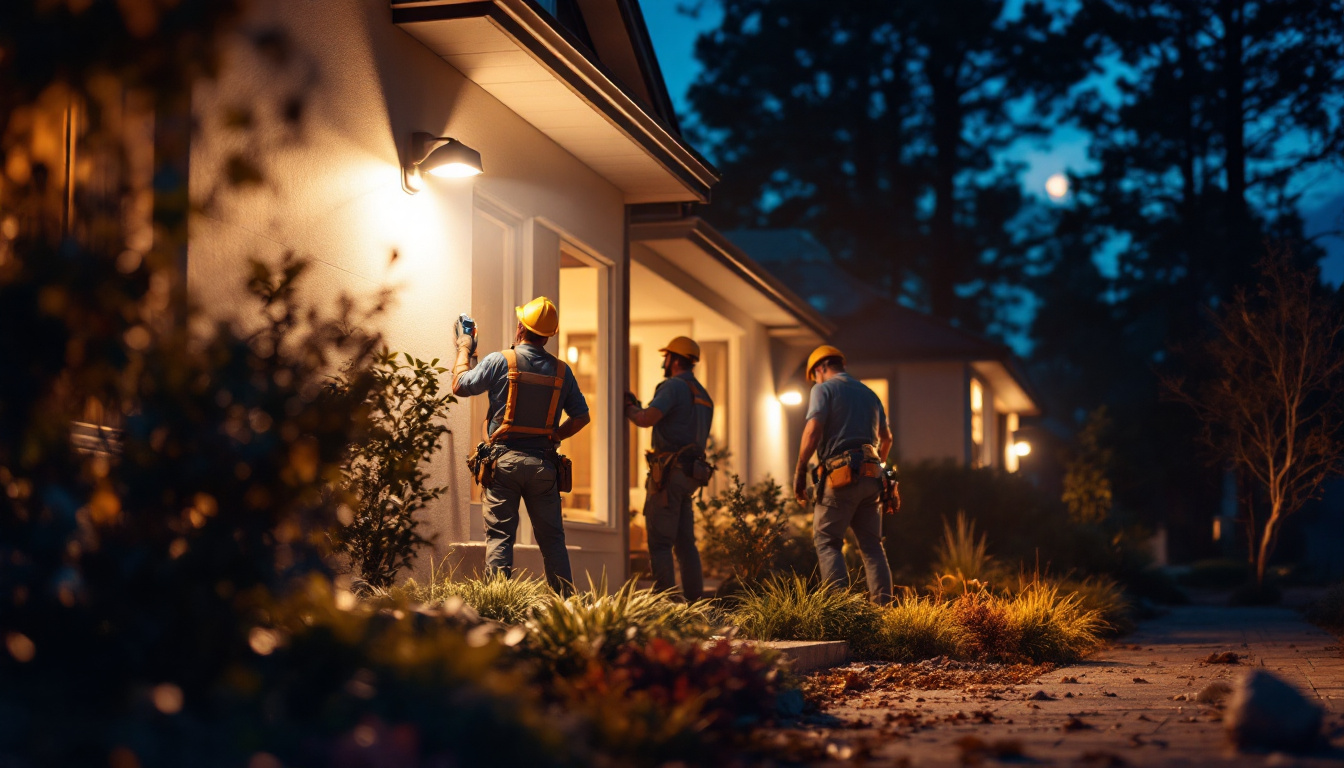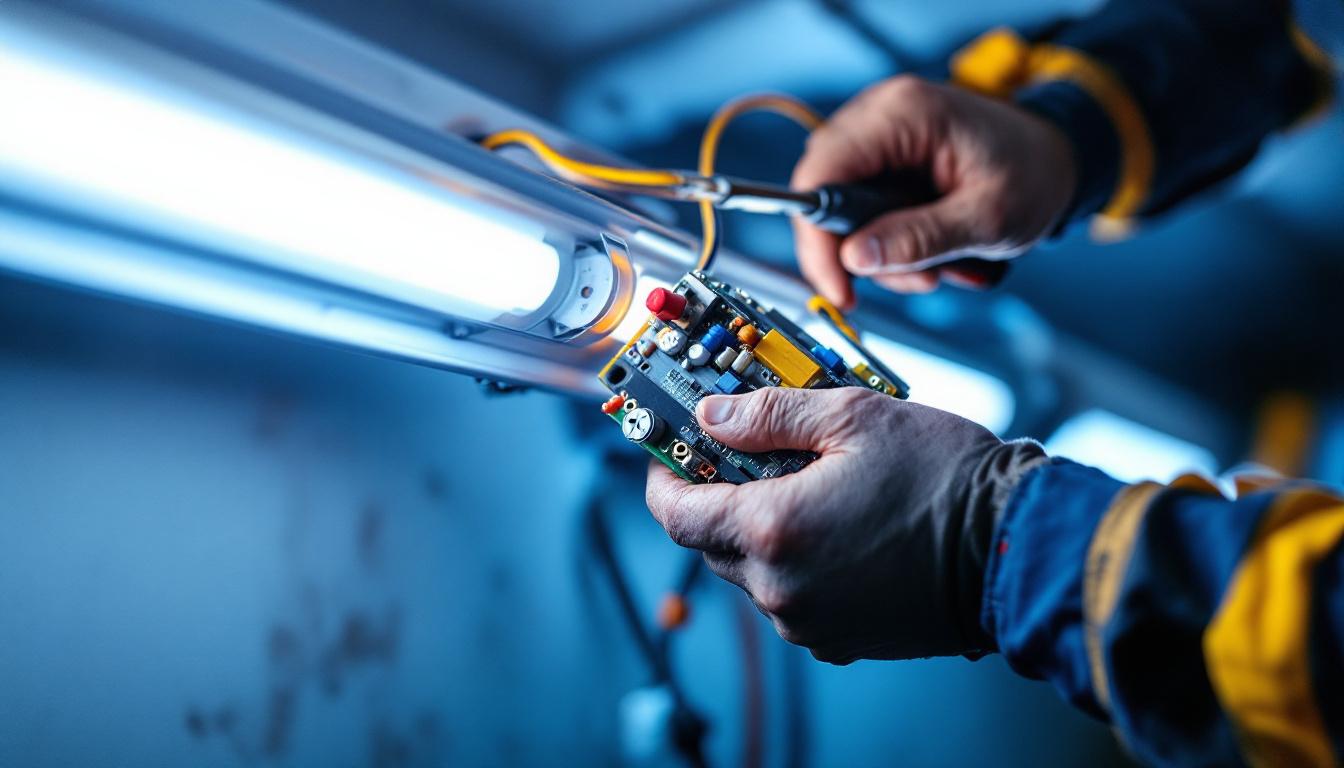
In the world of outdoor lighting, motion sensor flood lights have become increasingly popular due to their efficiency and security benefits. For lighting contractors, understanding the nuances of these systems is essential not only for installation but also for educating your team. Training your team effectively can lead to enhanced service delivery and customer satisfaction. This article delves into the various aspects of motion sensor flood lights and provides insights on how to train your team effectively.
Before diving into training techniques, it’s crucial to establish a solid understanding of what motion sensor flood lights are and how they function. These lights are designed to detect movement within a certain range and automatically illuminate when triggered. This feature not only enhances security but also conserves energy by ensuring that lights are only on when needed. In addition to their practical applications, motion sensor flood lights can also serve as a deterrent against potential intruders, creating a well-lit environment that discourages unwanted activity. Their ability to provide immediate illumination can be particularly beneficial in residential areas, parking lots, and commercial properties, where safety is a top priority.
Motion sensor flood lights come equipped with different types of sensors, each with unique characteristics and applications. The two primary types are passive infrared (PIR) sensors and microwave sensors. PIR sensors detect heat emitted by moving objects, making them suitable for outdoor areas where animals may trigger the light. On the other hand, microwave sensors emit microwave signals to detect movement, making them more sensitive and capable of covering larger areas. Additionally, some models combine both technologies, offering the advantages of each and minimizing false triggers caused by environmental factors.
Understanding these differences is vital for your team. Training should include detailed discussions on how each sensor operates, their advantages, and the best applications for each type. This knowledge will empower your team to make informed recommendations to clients based on their specific needs. Furthermore, exploring the installation requirements and maintenance tips for each sensor type can enhance your team’s expertise, ensuring they can provide comprehensive support to customers throughout the product lifecycle.
When training your team, it’s essential to highlight the key features that distinguish motion sensor flood lights from traditional lighting options. Features such as adjustable sensitivity, time delay settings, and coverage range can significantly impact the effectiveness of the lighting solution. These features not only enhance user experience but also contribute to the overall efficiency of the lighting system.
Adjustable sensitivity allows users to customize how easily the sensor is triggered, which is particularly useful in areas with frequent animal movement. Time delay settings enable the light to remain on for a specified duration after detecting motion, which can enhance convenience and security. Coverage range is another critical aspect; understanding how to select the right flood light for different environments will help your team provide tailored solutions. Additionally, many modern motion sensor flood lights come with integrated features such as dusk-to-dawn sensors, which automatically turn the lights on at sunset and off at sunrise, further optimizing energy usage and ensuring that the area is always well-lit during nighttime hours. This combination of features not only improves safety but also adds a layer of sophistication to outdoor lighting solutions, making them more appealing to potential customers.
Once your team has a solid understanding of motion sensor flood lights, the next step is to train them on installation best practices. Proper installation is crucial for ensuring that the lights function effectively and meet customer expectations.
Before installation, conducting a thorough site assessment is essential. Your team should be trained to evaluate the area where the flood lights will be installed, considering factors such as the layout, potential obstructions, and the specific needs of the client. This assessment will help determine the optimal placement of the lights for maximum effectiveness.
During site assessments, encourage your team to engage with clients to understand their concerns and preferences. This not only builds rapport but also ensures that the final installation aligns with the client’s vision and security requirements.
Proper mounting techniques are vital for the functionality and longevity of motion sensor flood lights. Your team should be trained on how to securely mount lights at the appropriate height and angle to maximize coverage while minimizing the risk of damage. Factors such as weather conditions, potential vandalism, and the type of surface will influence the choice of mounting hardware and techniques.
Additionally, emphasize the importance of following manufacturer guidelines during installation. Each product may have specific requirements that, if not adhered to, could result in malfunction or reduced effectiveness. Training sessions should include hands-on practice to reinforce these techniques.
Even the best-installed motion sensor flood lights require regular maintenance to ensure optimal performance. Training your team on maintenance practices will not only prolong the life of the fixtures but also enhance customer satisfaction.
Routine maintenance should include cleaning the sensors and fixtures, checking for any obstructions, and verifying that the lights are functioning correctly. Dust, dirt, and debris can accumulate on the sensor, affecting its ability to detect motion accurately. Instruct your team to schedule regular maintenance visits and educate clients on how to maintain their lights between professional check-ups.
Moreover, your team should be equipped to handle simple repairs, such as replacing bulbs or adjusting sensor settings. Providing training on these tasks will empower your team to address common issues quickly, minimizing downtime for clients.
Despite proper installation and maintenance, issues may still arise. Training your team to troubleshoot common problems will enhance their confidence and effectiveness on the job. Common issues include lights that do not turn on, lights that stay on continuously, or lights that are overly sensitive.
Encourage your team to develop a systematic approach to troubleshooting. This could involve checking power sources, ensuring that sensors are clean and unobstructed, and verifying that settings are correctly configured. By equipping your team with problem-solving skills, they can provide efficient solutions, leading to increased customer satisfaction.
Training your team is not just about installation and maintenance; it also involves educating clients on how to use their motion sensor flood lights effectively. A well-informed client is more likely to appreciate the value of their investment and will be more satisfied with the service provided.
When handing over a completed installation, take the time to walk clients through the features and settings of their new motion sensor flood lights. Demonstrating how to adjust sensitivity and time delay settings can empower clients to customize their lighting experience to suit their needs.
Additionally, provide clients with written materials or guides that outline the key features, maintenance tips, and troubleshooting steps. This not only serves as a reference but also reinforces the professionalism of your service.
Clients may have concerns regarding the effectiveness of motion sensor flood lights, particularly in relation to false triggers from animals or environmental factors. Training your team to address these concerns with confidence and knowledge is essential.
Encourage your team to explain how sensitivity settings can be adjusted to minimize false triggers and discuss the advantages of different sensor types. By providing clear and informative responses, your team can build trust and confidence with clients, ultimately leading to long-term relationships.
The lighting industry is constantly evolving, with new technologies and trends emerging regularly. For lighting contractors, staying updated on these changes is crucial for maintaining a competitive edge. Training your team to be aware of industry trends can enhance their expertise and improve service delivery.
Encourage your team to pursue continuing education opportunities, such as workshops, webinars, and industry conferences. These platforms provide valuable insights into the latest technologies, installation techniques, and best practices. Investing in your team’s education not only benefits their professional development but also enhances the overall quality of service your company provides.
Additionally, consider establishing a culture of knowledge sharing within your team. Regular meetings to discuss new findings, share experiences, and brainstorm solutions can foster a collaborative environment where everyone benefits from each other’s expertise.
Networking with other professionals in the lighting industry can also provide valuable insights and opportunities for collaboration. Encourage your team to connect with peers, suppliers, and manufacturers to stay informed about new products and innovations.
By fostering relationships within the industry, your team can gain access to exclusive training sessions, product demonstrations, and firsthand knowledge of emerging trends. This proactive approach not only enhances their skills but also positions your company as a leader in the field.
Training your team in the intricacies of motion sensor flood lights is an investment that pays dividends in customer satisfaction and service quality. By providing comprehensive education on the technology, installation best practices, maintenance, and client interaction, your team will be well-equipped to meet the demands of the market.
As the industry continues to evolve, staying informed and adaptable will be key to success. By fostering a culture of continuous learning and knowledge sharing, your team can remain at the forefront of the lighting industry, ensuring that your company thrives in an ever-changing landscape.
In summary, equipping your team with the right knowledge and skills will not only enhance their confidence but also elevate the overall service experience for your clients. Embrace the opportunity to train and empower your team in the world of motion sensor flood lights, and watch as your business flourishes.
Ready to elevate your lighting projects with the best in motion sensor flood lights? Look no further than LumenWholesale, where we provide contractors with exceptional, spec-grade lighting products at unbeatable wholesale prices. Say goodbye to local distributor markups and hello to our premium selection that meets the highest industry standards. With LumenWholesale, bulk buying is a breeze, thanks to our free shipping policy, ensuring you get the most value without any hidden fees. Don’t compromise on quality or cost. Visit LumenWholesale today and discover the ideal combination of quality, affordability, and convenience for your lighting needs.

Discover the vibrant world of LED RGB lights and their role in energy-efficient lighting solutions.

Discover the diverse world of fluorescent tubes and understand why staying informed is crucial for lighting contractors.

Discover the essential guide to electronic ballasts for fluorescent lamps, tailored for lighting contractors.

Discover how outdoor house lighting fixtures are revolutionizing the work of lighting contractors, enhancing curb appeal, and boosting energy efficiency.